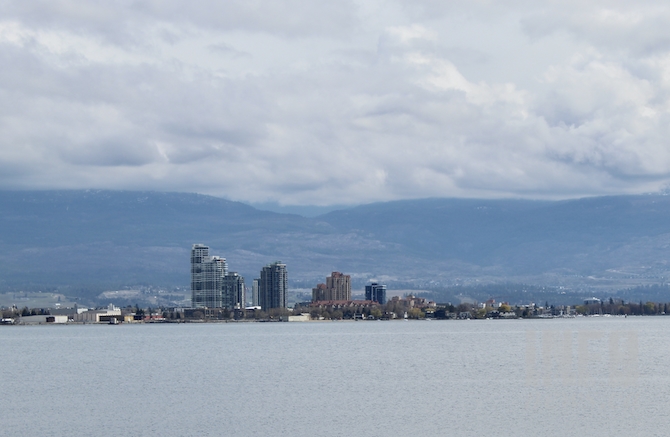Despite building boom, Okanagan city struggling to house 5,000 new residents
After leading Canada’s largest cities with the highest growth rate at 14% during the last census period, Kelowna has continued to draw more people.
In 2021, another 5,000 people moved to Kelowna, according to the city’s annual Housing Report going to city council on Monday. Most came from other Canadian provinces.
“While Kelowna has brought on a record number of rental units in recent years, there is still unmet demand for rental housing due to strong population growth and decreasing vacancy rates,” the report says.
“Additionally, rising home ownership costs are expected to further increase demand for rental housing. If rental rates continue to rise and the gap between market rental rates and subsidized rental rates becomes too large, it will become more difficult for people to move from subsidized rental housing into market rental housing or home ownership.”
READ MORE: Kelowna, Kamloops among three fastest-growing larger cities in Canada, new census data shows
In 2021, there were 716 new market rental units completed in the city, along with 169 carriage houses/suites.
Still the rental vacancy rate fell to 0.6%. A healthy vacancy rate is considered to be in the three to five percent range.
The average rental rate for all units rose by 4.8% to $1,315, according to Canadian Mortgage and Housing Corporation statistics cited in the report.
Zumper.com found the average asking price for one-bedroom units actually available in Kelowna was $1,710 in March, the fourth highest in the country.
READ MORE: Volatile March drops some Kelowna rents, boosts other
Along with the 716 rental units completed last year, there are another 1,493 that have been approved but it will take up to three years for them to be finished. Applications have been received for another 1,803 units, which are not yet approved. Those will take three to five years to complete, the report says.
On the home ownership side, there were a total of 1,208 occupancy permits issued last year, with 778 (64.4%) being for apartments, 224 for single-family homes and 206 for townhouses.
There were 5,314 homes sold in Kelowna, far above the 10-year average of 3,517.
Median prices for all housing types climbed almost 20% to $650,000.
A growing population with its subsequent upward pressure on affordability means more people face homelessness and the need for subsidized housing increases.
There is no centralized waitlist for subsidized rental housing in Kelowna but a B.C. Housing waitlist for some of the affordable housing in Kelowna has 300 names.
More subsidized housing is on the way but it will take time. There are 264 units approved or under construction but those will take up to three years before they’re finished. Another 176 units have yet to be approved. If they are, it will take three to five years to build them.
“The number of people experiencing homelessness appears to be increasing despite additional units coming online,” the report says.
There were 183 supportive housing units opened in Kelowna in 2021 compared to 158 units in 2020 but the demand still exceeds supply. No new supportive housing projects are on the books.
Supportive housing is for people with financial, mental, physical and social needs. Of the new supportive housing that opened, about 75% went to seniors.
“As housing becomes less affordable, individuals that are ready to leave supportive housing to live independently may find it increasingly difficult to do so,” the report says. “As a result, waitlists for supportive housing may grow and people seeking supportive housing may become ‘stuck’ in the emergency response system.”
To contact a reporter for this story, email Rob Munro or call 250-808-0143 or email the editor. You can also submit photos, videos or news tips to the newsroom and be entered to win a monthly prize draw.
We welcome your comments and opinions on our stories but play nice. We won't censor or delete comments unless they contain off-topic statements or links, unnecessary vulgarity, false facts, spam or obviously fake profiles. If you have any concerns about what you see in comments, email the editor in the link above.




